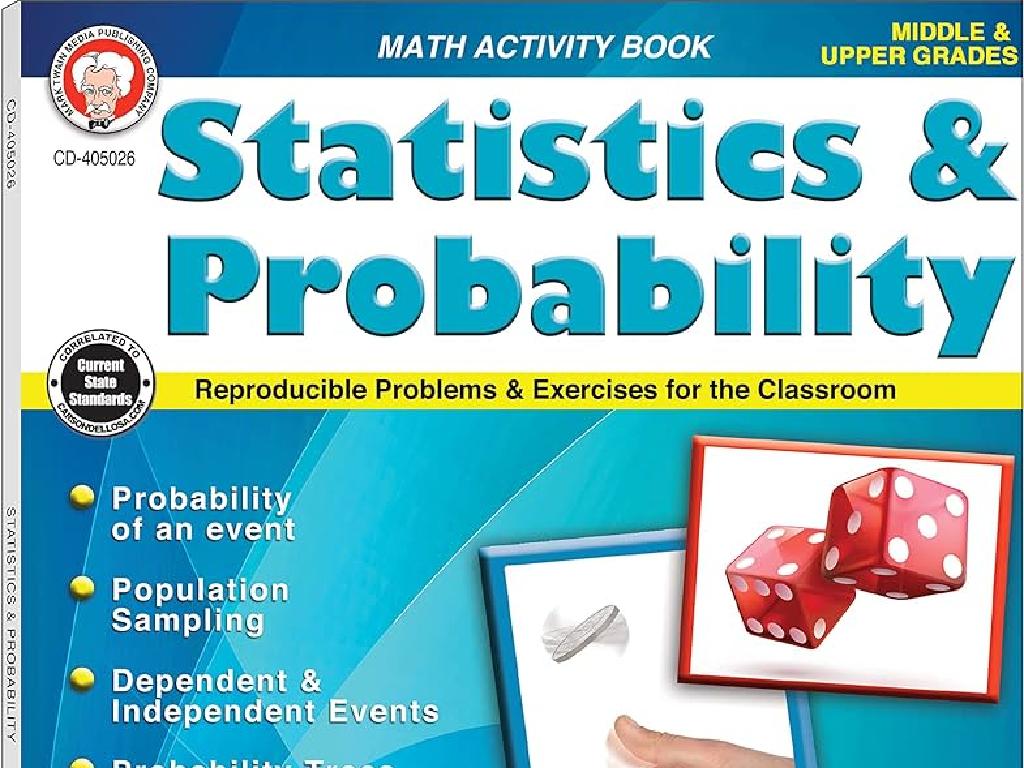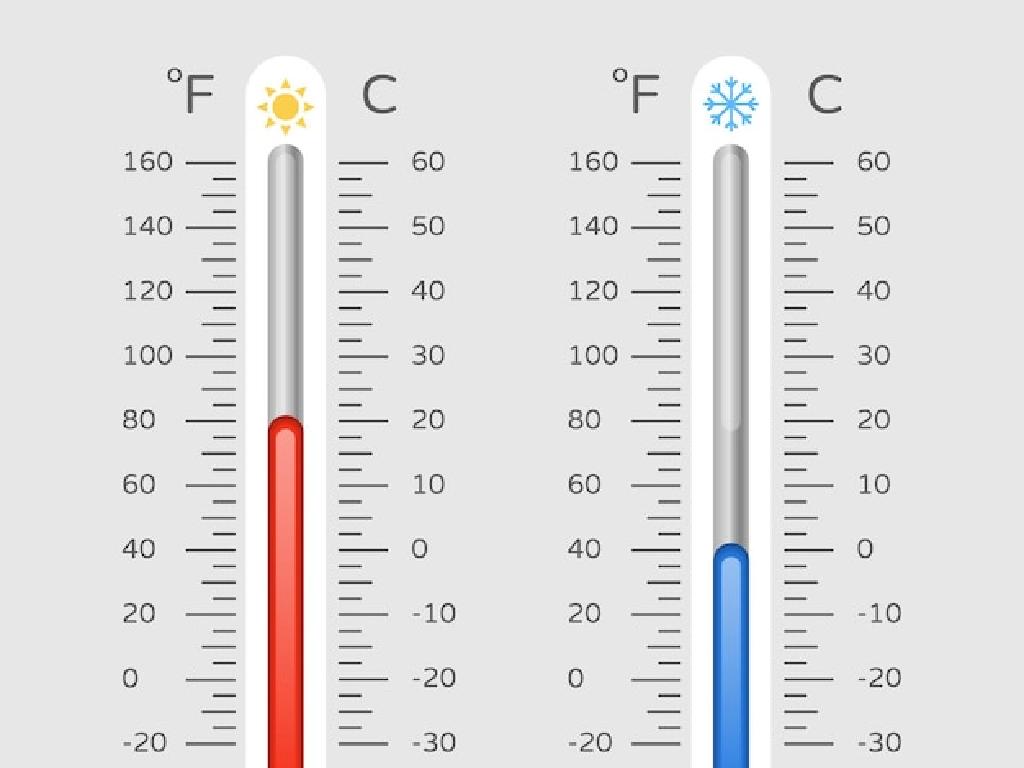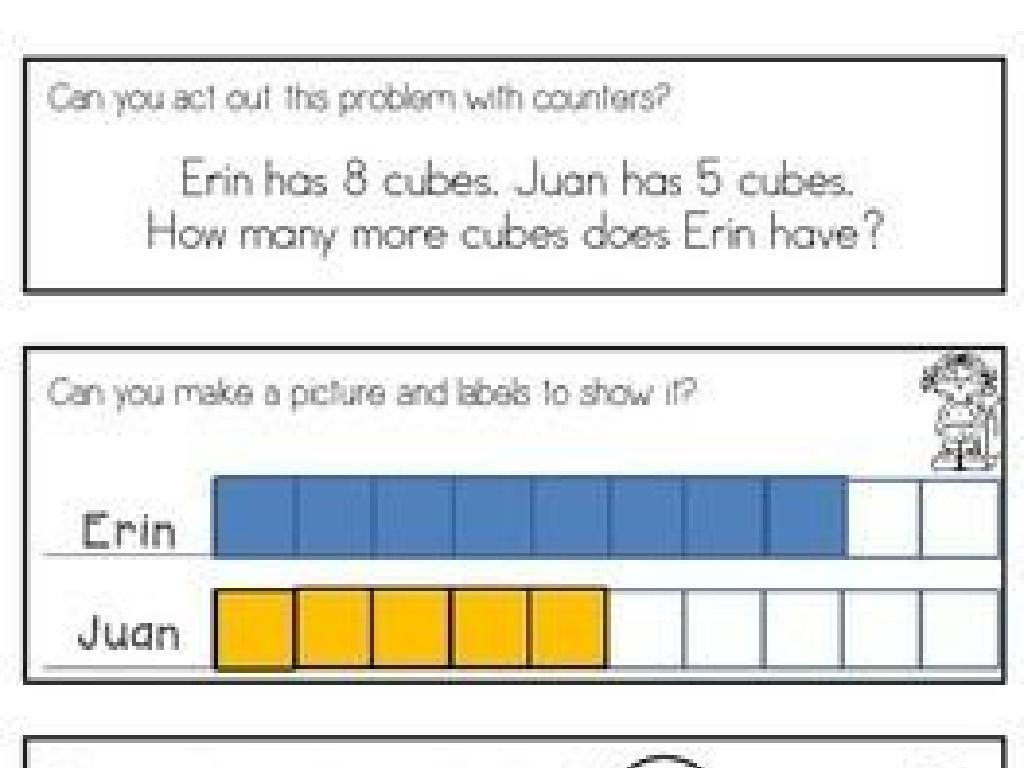Interpret Line Plots
Subject: Math
Grade: Sixth grade
Topic: Data And Graphs
Please LOG IN to download the presentation. Access is available to registered users only.
View More Content
Interpreting Line Plots
– Learn to read line plots
– A line plot displays data along a number line
– Interpret data accurately
– Look for trends, patterns, and outliers
– Significance of line plots
– Useful for comparing changes over time
– Real-life applications
– Examples: weather trends, class test scores
|
This slide introduces students to the concept of line plots, a type of graph that is essential for displaying and interpreting data. Students will learn how to read line plots, including understanding the scale and what each point represents. Emphasize the importance of interpreting data accurately to make informed decisions. Discuss how line plots are used in various aspects of everyday life, such as tracking temperature changes or comparing test scores over time. Provide examples and encourage students to think of other areas where line plots could be useful. The goal is to help students become comfortable with line plots and recognize their value in data analysis.
Understanding Line Plots
– Define a line plot
– A graph showing data on a number line
– ‘X’ marks frequency of data
– Each ‘X’ above a number shows how often it appears
– Ideal for small data sets
– Best suited for less complex, manageable data
– Visualizing data distribution
|
A line plot is a simple yet powerful tool for displaying data in a visual format that is easy to understand. It is particularly useful for small data sets, where each ‘X’ represents the occurrence of a value along a number line, allowing students to quickly see the frequency of data points. This slide will introduce students to the concept of line plots, emphasizing how to read them and why they are useful for certain types of data. Encourage students to think of situations where they could use a line plot to represent data, such as recording daily temperatures or tracking the number of books read over time.
Creating a Line Plot
– Step 1: Collect your data
– Gather information you want to visualize
– Step 2: Decide on scale and intervals
– Scale is the range of values; intervals are evenly spaced divisions
– Step 3: Plot data with Xs
– Each X represents an occurrence above its value on the scale
|
This slide is designed to guide students through the process of creating a line plot, which is a type of graph used to display frequency of data along a number line. Start by collecting data, which could be anything from test scores to the number of books read in a month. Next, determine the scale, which should encompass the smallest and largest values, and set even intervals to ensure clarity. Finally, have students plot the data by placing Xs above the corresponding values on the scale, stacking them if frequencies repeat. This visual representation helps in quickly identifying trends and is a fundamental skill in interpreting data.
Understanding Line Plots
– Examine a sample line plot
– A visual representation of data where each ‘X’ shows frequency of data points
– Each ‘X’ marks a data occurrence
– One ‘X’ above a number means that number occurred once in the data set
– Analyze data from the plot
– Look for patterns, range, and outliers in the data
– Discuss insights from the plot
– What does the plot tell us about the data? Are there common values or a spread?
|
This slide introduces students to the concept of line plots, a type of graph that is useful for showing frequency of data. Start by presenting a simple line plot example. Explain that each ‘X’ on the plot represents an occurrence of a data point. Guide students to observe and analyze the plot, identifying patterns, range, and any outliers. Encourage them to think about what the data might represent and what conclusions can be drawn from it. This will help them understand how to interpret data from line plots and apply this knowledge in practical situations.
Interpreting Line Plots
– Reading and extracting information
– Observe each data point and intervals on the plot
– Identifying patterns in data
– Look for trends such as increases, decreases, or constants
– Making observations from plots
– Note any outliers or clusters of data points
– Answering questions using plots
– Use the plot to determine data specifics like mean, median, mode
|
This slide aims to teach students how to effectively interpret line plots. Start by explaining the structure of a line plot, including the X and Y axes, and how each point on the plot represents a piece of data. Emphasize the importance of recognizing patterns, such as upward or downward trends, and how they can indicate changes over time. Encourage students to make observations about the data, such as identifying clusters of points or outliers that don’t fit the pattern. Finally, demonstrate how to use line plots to answer specific questions about the data set, such as calculating averages or comparing frequencies. Provide examples of questions and work through them together as a class.
Practice Time: Creating & Interpreting Line Plots
– Collaborate to create a line plot
– Use our class survey data
– We’ll visualize the survey results
– Work in pairs for interpretation
– What do the data points tell us?
– Discuss findings with the class
– Share insights from your analysis
|
This slide initiates a hands-on activity where students will apply their knowledge of line plots in a practical exercise. They will use real data from a class survey to create a line plot, which will help them understand how to organize and represent data visually. Working in pairs encourages collaboration and discussion, allowing students to explore different interpretations of the data. After creating and analyzing the line plot, each pair will discuss their findings with the class, facilitating a deeper understanding of how line plots can be used to interpret data sets. Provide guidance on how to plot data points on a number line and how to read the plot to extract information. This activity will reinforce their learning and improve their analytical skills.
Class Activity: Create Your Own Line Plot
– Collect data: books read this month
– Draw your line plot with the data
– Use a ruler for straight lines & even spacing
– Analyze your line plot
– Look for trends, outliers, and the range
– Share your findings with the class
– Discuss what your data shows about reading habits
|
This activity is designed to provide hands-on experience with line plots. Students will first collect data on the number of books they’ve read over the month. They will then use this data to create a line plot, ensuring they mark the number line accurately and plot points corresponding to the data collected. Encourage students to analyze their line plot by identifying any trends, outliers, or the range of data. Finally, students will prepare to present their line plot to the class, sharing insights into their personal reading habits and what they’ve learned from the activity. Possible variations of the activity could include comparing plots with a partner, grouping data by genre, or tracking reading progress over several months.
Conclusion & Homework: Real-Life Line Plots
– Excellent work on line plots!
– Homework: Find a line plot example
– Look for line plots in news, weather reports, or sports stats
– Describe what the plot reveals
– What’s the trend? Any patterns? Write your observations
– Prepare to discuss in class
|
Students have done a great job learning to interpret line plots. For homework, they are tasked with finding a line plot in a real-life context, such as in a newspaper article, online, or in a magazine, and writing a brief description of what the data on the plot indicates. This could be a weather trend, sports statistics, or any other topic of interest. They should note any patterns or trends they observe and be prepared to discuss how the line plot helped them understand the information. This exercise will reinforce their understanding of line plots and how they are used in everyday life to interpret data.






